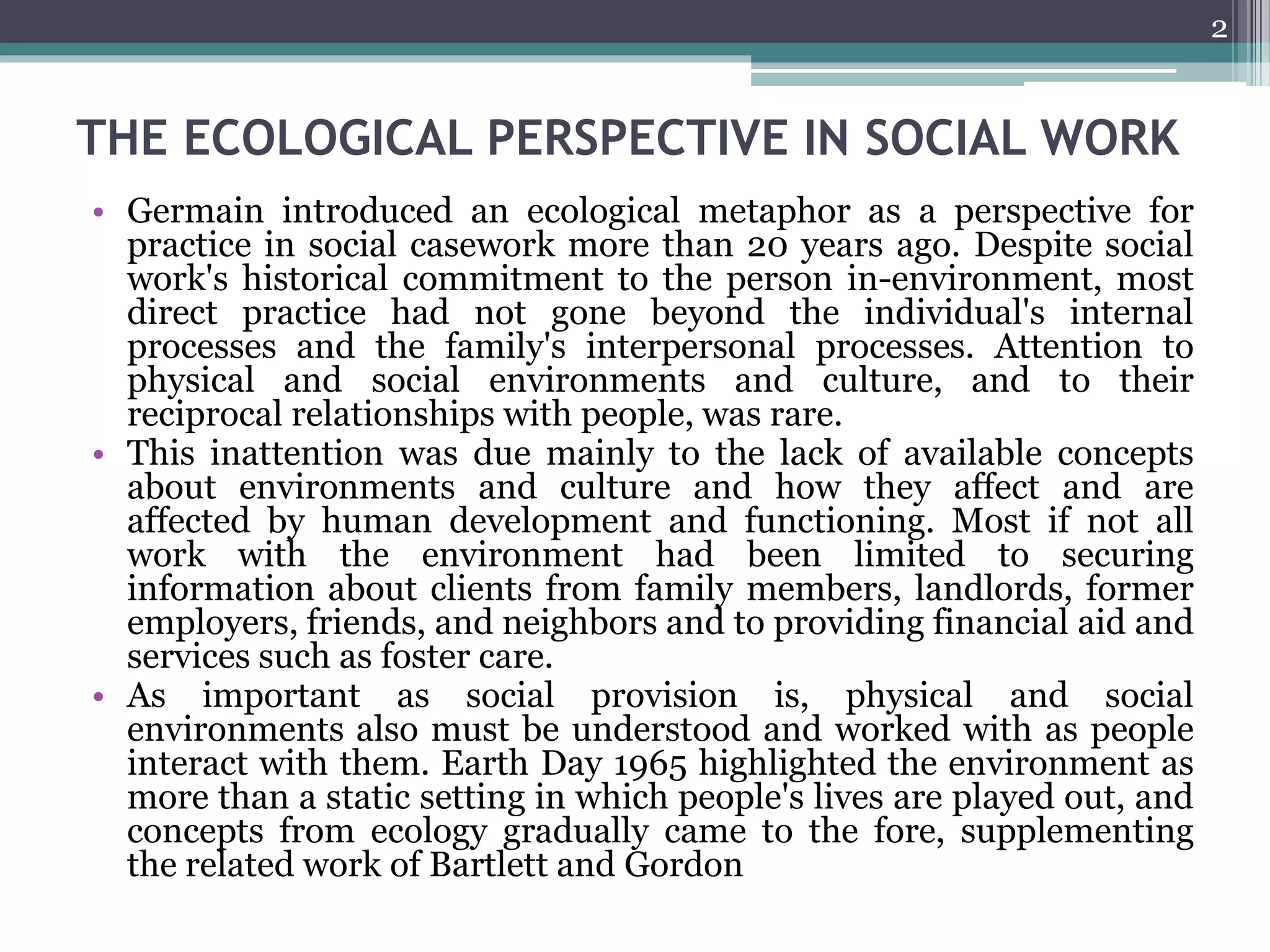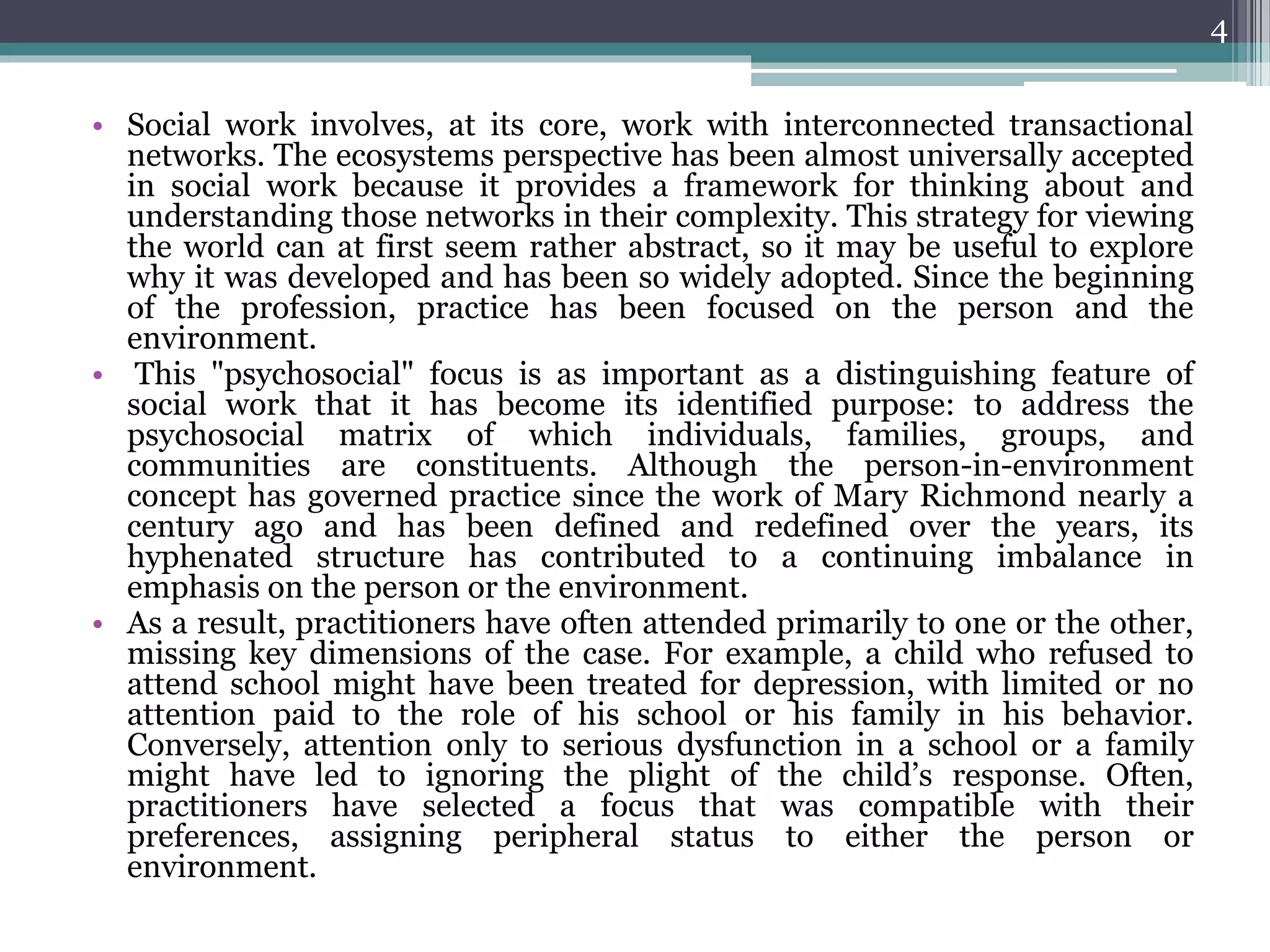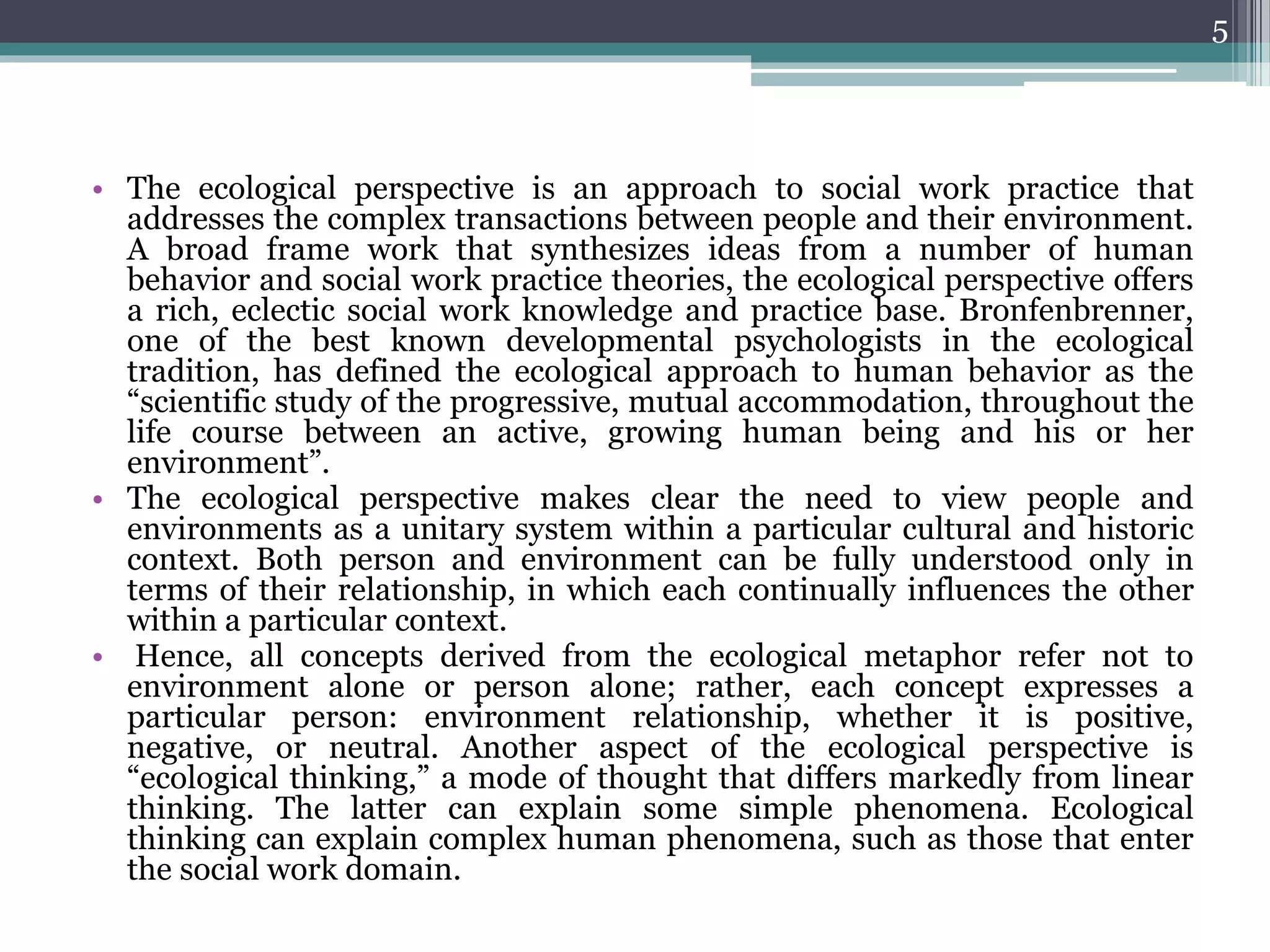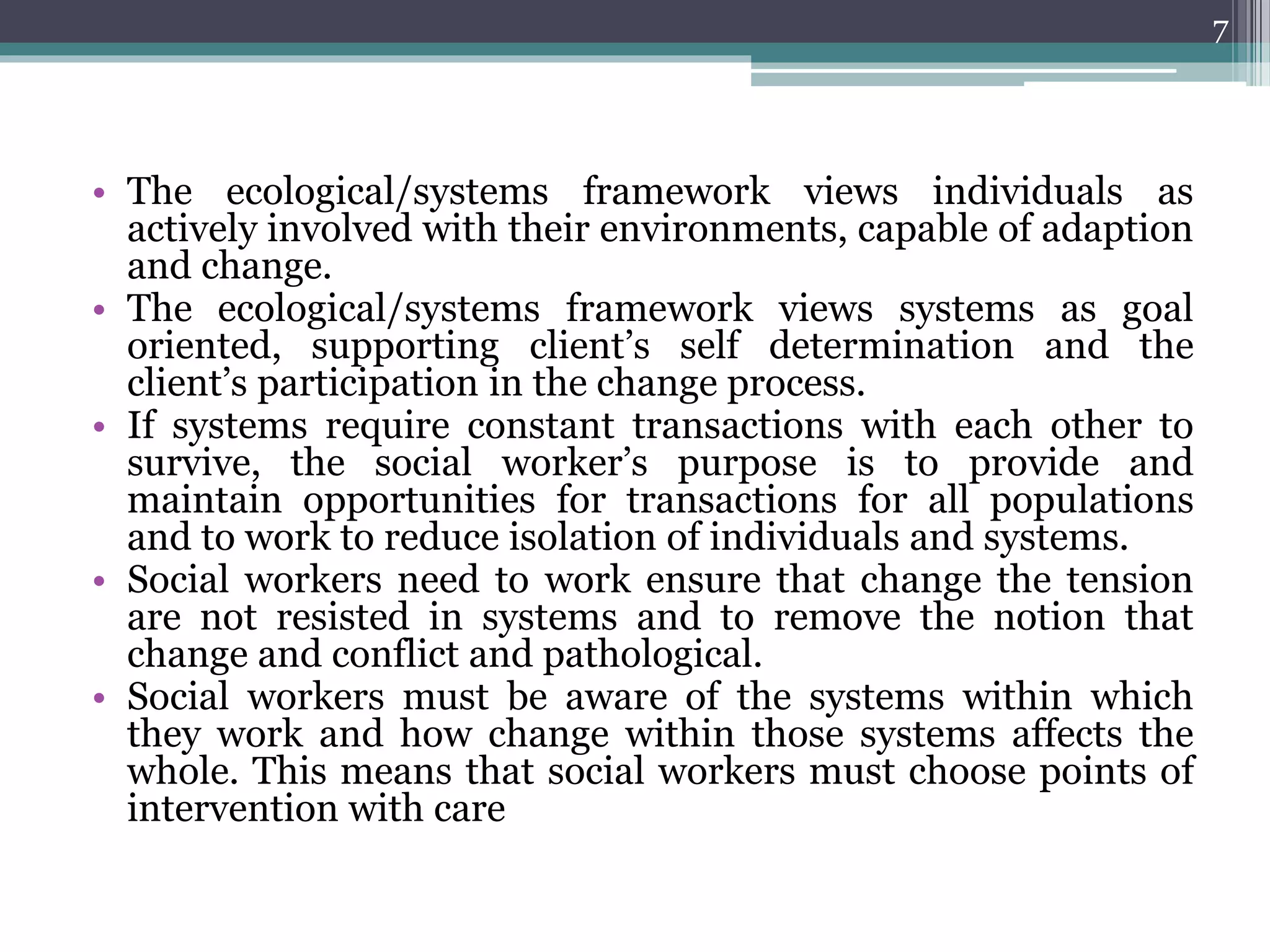The document discusses the ecological perspective in social work, emphasizing the importance of understanding the interactions between individuals and their environments to better address social welfare issues. It highlights that traditional social work often focused too much on either the person or the environment, neglecting their reciprocal relationships, which led to incomplete solutions for clients. The ecological/systems framework aims to provide a holistic view, integrating various factors that influence human behavior and emphasizing the dynamic nature of person-environment interactions to enhance social work practice.









